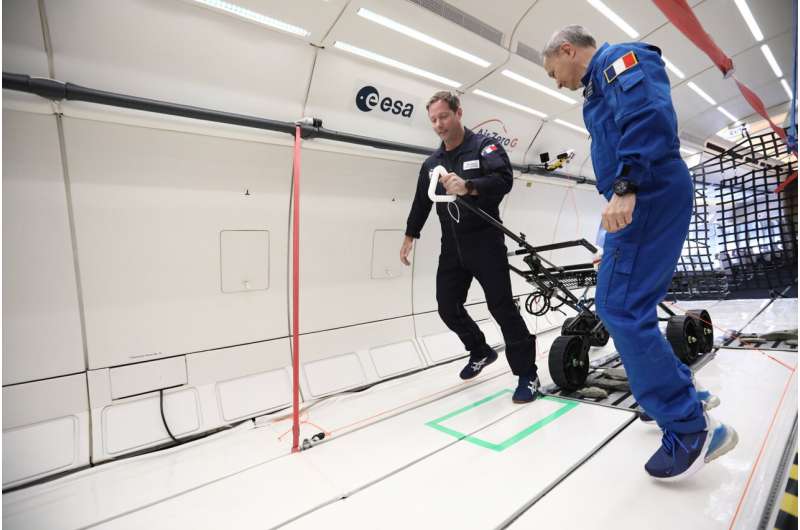This article has been reviewed according to Science X's editorial process and policies. Editors have highlighted the following attributes while ensuring the content's credibility:
fact-checked
trusted source
proofread
Gravity goes lunar: Putting LESA to the test

Looking to the not-too-distant future when the European Service Module will propel European astronauts in the Orion spacecraft to the Gateway and on to the surface of the moon, scientists and engineers are eagerly exploring the tools and equipment for a lunar mission.
This picture shows the Lunar Equipment Support Assembly (LESA) being tested during a partial-gravity parabolic flight. In April, ESA, along with the French space agency CNES and the German Aerospace Center DLR, sponsored a parabolic flight campaign. The campaign consisted of three flights, each featuring 31 parabolas, allowing scientists to replicate the gravitational forces of both the moon and Mars. During those 93 parabolas, the gravity experienced by the crew was reduced to one-sixth (to simulate lunar gravity) or one-third (to mimic Martian gravity) of Earth's gravity.
Under the watchful eye and guidance of ESA astronaut and spacewalk trainer Hervé Stevenin, ESA astronaut Thomas Pesquet, who was one of the pilots of the spacecraft, couldn't resist a quick try during a break—the pilots rotate every few parabolas.
The heart of the LESA investigation lies in its various transport carrier prototypes on wheels to assist Artemis astronauts during moonwalks. The mobility of these carriers, designed to transport equipment and tools, was evaluated along a four-meter path inside the aircraft.
The version of the carrier in the image is called LESA-NEST (Near-by Equipment Support Trolley), and it is designed for transporting tools and equipment.
LESA was previously tested in another unique environment: submerged during the NASA-NEEMO 23 mission in 2019. Led by ESA astronaut Samantha Cristoforetti, astronauts lived and worked underwater for nine days inside Aquarius, the world's only undersea habitat, and tested a set of geological sampling tools and the LESA support trolley to be used during future missions to the moon.
After conquering water and air, hopes are set for a testing on the next great frontier, the moon.
Provided by European Space Agency




















